Surface area of Pyramids and cones 12-3
advertisement
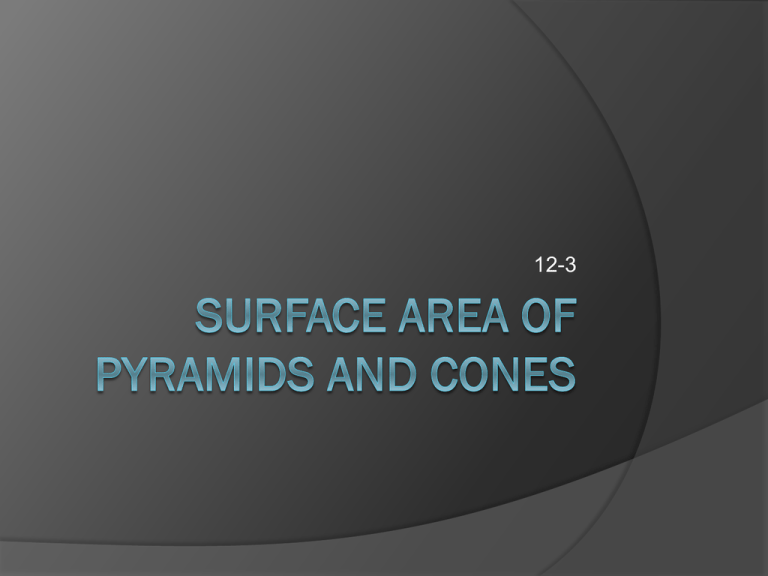
12-3 Pyramids A pyramid is a polyhedron in which one face (the base) can be any polygon and the other faces (the lateral faces) are triangles that meet at a common vertex (called the vertex of the pyramid) Pyramid Parts The altitude of a pyramid is the perpendicular segment from the vertex (also called apex) to the plane of the base. The length of the altitude is the height (h) of the pyramid. Pyramid Parts Cont. A regular pyramid is a pyramid whose base is a regular polygon. The lateral faces are congruent isosceles triangles. The slant height (l) is the length of the altitude of a lateral face of the pyramid. Vertex or apex Lateral Area The lateral area is the sum of the areas of the congruent lateral faces. Let’s work it out. l base 9090 Lateral s Face Lateral Areas of Regular Pyramids The lateral area of a regular pyramid is half the product of the perimeter of the base and the slant height. L.A. = ½ pl Surface area of a Regular Pyramid The surface area of a regular pyramid is the sum of the lateral area and the area of the base (B). S.A. = L.A. + B = ½ pl + B Cones A cone is like a pyramid but its base is a circle. In a right cone the altitude is a perpendicular segment from the vertex to the center of the base. The height (h) is the length of the altitude. The slant height (l) is the distance from the vertex to a point on the edge of the base Right cone l Lateral Area of a Right Cone The lateral area of a right cone is half the product of the circumference of the base and the slant height L.A. = ½ (2πr)l = πrl Surface Area of a Right Cone The surface area of a right cone is the sum of the lateral area and the area of the base. S.A. = L.A. + B = πrl +πr2 Joke time What do you get when you cross geometry and McDonald’s? A plane cheeseburger Joke time Why was the obtuse angle upset? Because he was never right.
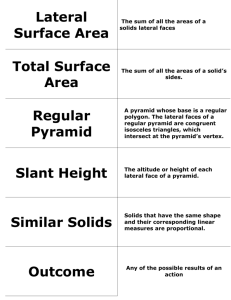
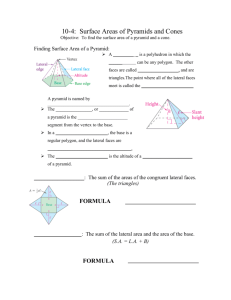
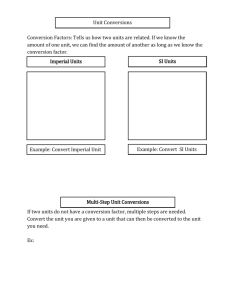
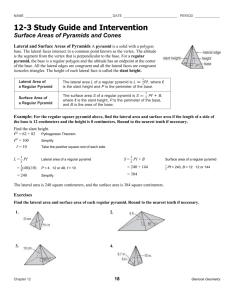
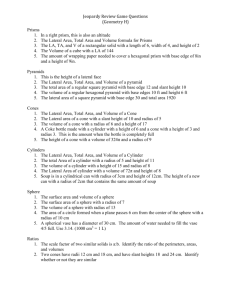
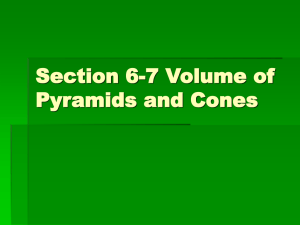
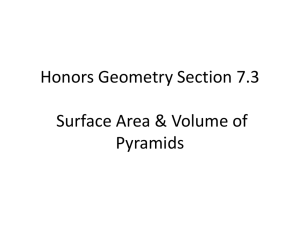
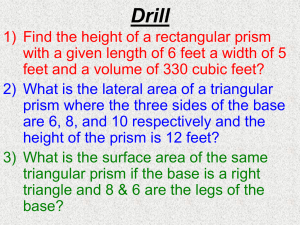

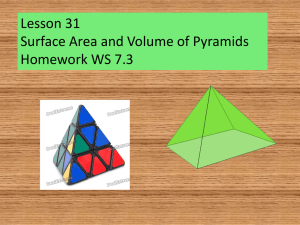

![Volume of Pyramids, Cones, and Spheres [12/4/2013]](http://s2.studylib.net/store/data/005724855_1-4c0eaf218975fc4d9fe792c18193e4dc-300x300.png)